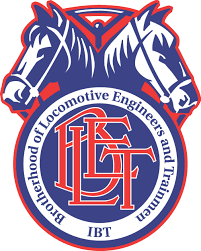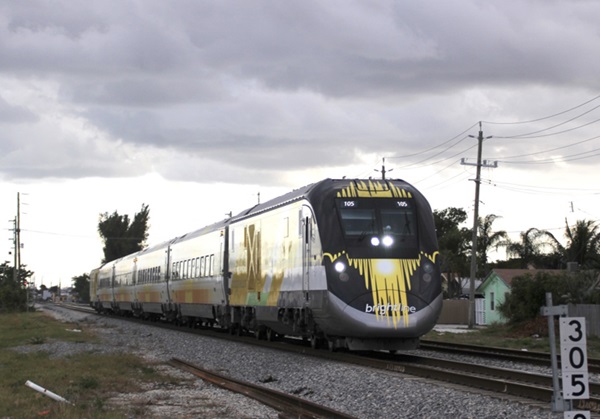The bill, which was passed in both houses of the state legislature earlier this month and was signed into law on Thursday, was backed by the Brotherhood of Locomotive Engineers and Trainmen and the SMART Transportation Division. Union officials say the law’s passage is a victory in their battle against single-person crews.
“This represents a significant legislative victory for all railroaders, especially our hard working engine and train crews,” says BLET National President Dennis R. Pierce. “In the event of an emergency situation, a lone crew member cannot properly assess the situation, secure the train, notify all necessary emergency responders and take other steps to mitigate the emergency in a timely manner.”
Similar legislation has previously been passed in California, Arizona, Wisconsin, and West Virginia.
Railroads that violate the new law will be fined $250 to $1,000 for a first offense, $1,000 to $5,000 for a second offense committed within 3 years, or $5,000 to $10,000 for a third or subsequent offense committed within 3 years.
Two-person crew bills have been introduced in more than a dozen state legislatures this year.
Last week, two-person crew bills passed the Maryland House of Delegates and the Washington State House of Representatives and will now go before their respective state Senates. Wyoming’s House of Representatives also passed a two-person crew bill this spring but it died in the state Senate.
John Risch, national legislative director for SMART Transportation Division, told his members not to be discouraged when two-person crew legislation fails.
“Even when we come up a tad short in a state, it should not be viewed as a failure, but instead the building block to the next legislative session,” Risch writes.
On Friday, both unions announced their support for the introduction of a bill in the U.S. House of Representatives that would require two people aboard all freight trains in the country. The bill, dubbed the Safe Freight Act, was introduced by U.S. Rep. Don Young, R-Alaska, who has introduced similar bills in the past. All previous versions of the bill have failed although that could change with a Democratic held House.
In a joint news release announcing their support, leaders of SMART and BLET referenced the Lac-Mégantic, Quebec, oil train disaster and automated train derailments in Australia as reasons for the legislation.
“A clear message must be sent to our lawmakers and to the general public that multi-person crews are essential to ensuring the safest rail operations possible in their communities,” says SMART Transportation Division President John Previsich. “I would like to thank Congressman Young for his leadership on this critical issue as we continue to improve safety on our nation’s railroads for both our members and for the general public.”
While the unions say having two people on a freight train makes it safer, the railroads say there is no evidence to prove that.
“There simply isn’t a safety justification,” says Kristin Smith, vice president of communications for the Association of American Railroads. “It disregards freight rail’s strong safety record and stifles innovation. Rail staffing should be determined through collective bargaining, not through a complicated state-by-state patchwork.”















I agree with Karl Erickson, I don’t think the states have jurisdiction over interstate commerce. When I worked for SCL in the early ’70s, we regularly had 5 man crews, but that was with a caboose on the through freights. Without a caboose and crew, I just can’t see a one man crew in the cab to be possible. Who is going to throw the switches so as to place/pick up cars? Who is going to walk the train to replace a blown air hose or to replace a broken knuckle?
Someday, this will get repealed – the states will be forced to do so as technology marches forward. It’s not an insult to the railroaders out there who do a darn good job at their craft. It’s technological advancement, and this enactment is the union leadership trying to appease their nervous brothers. The only example I can think of is if, 140 years ago and long before radios, operating crews would’ve asked for a mandate that a horse be placed on every train, so someone could ride for help if something went wrong. PTC isn’t perfect; in-cab monitoring devices to make sure the engineer is awake/alert/alive don’t exist. Eventually, railroads will know the second a knuckle breaks and they’ll have a roving mechanic on duty 24/7 to assist the lone crewman on the train. It’s not here yet, but it’s coming, and just like New York and Indiana had to repeal their full crew laws, so too will this go away.
Can states actually enforce this? They haven’t been able to enforce a time limit on blocking grade crossings. I would think that a federal law would take precedence over state laws.
Sorry to sound like an arrogant Brit, but here (as in most other European countries) we have had only one person in the cab for over 30 years, on both freight and passenger trains – and we have a much better railway safety record than does the USA. Yes, I know you have unfenced rights-of-way and many more grade crossings than we do, but having a second person in the loco cab won’t stop some idiot driving a semi-trailer across the tracks in front of a train. It’s far better to spend money on preventing problems in the first place, by investing in better systems, and higher maintenance standards, than it is to employ extra personnel in the expectation that things will go wrong.
Arkansas once had a full crew law – 3 brakemen!
In a line-haul train out in the boonies, I don’t think one person on the train is safe under the best of circumstances. In case of breakdown, derailment broken coupler, etc., one person is lunacy. The solution isn’t a law, it’s the railroad’s risk management administrator and its insurance company figuring out what’s obvious to everyone else.
I’ve been waiting a long time to see the statistics about which is safer, 1 or 2 in the cab.
I am aware of at least one accident where both crew members fell asleep and crashed into another train. Or when a commercial flight overflew the destination airport by miles because the pilots were distracted by their discussion union seniority rules. So 2 is not universally safe. I just don’t know if 2 is actually safer than one…
I agree with keeping at least two people in the cab at all times because until trains become completely automated and a way is found to change coupler knuckles out on the road (or anywhere else for that matter), two people will always be necessary.
This is nuts. Some states want 2 in the cab, others leave it up to the railroad. This needs to be addressed nationally so there is uniformity. If RR’s decide on 1 crew member, then when that train hits the CO stateline (example), a 2nd crew member jumps on board. I know that’s an exaggeration, but there needs to be a national decision one way or the other.
Not a problem. With even MORE Precision Slow Railroading all they need to do is half the number of trains. Problem solved.
(I’ve never understood how a trucking company can make money with 1 driver and 1 trailer and the railroads can’t figure-out how to make money with 2 drivers and 50 trailers. Maybe Precision Slow Railroading will help…)
Meanwhile, trucks are moving toward driverless operations.
What is common for freight locomotive staffing in other parts of the world…Europe, Asia, Australia, etc.?
What we need now is a law requiring at least one person in the cab of automobiles and trucks running on public streets and highways.
In the 1970s New York State had a full crew law that required 6 men if the train was regularly over 35 cars. The railroad had to advertise the job of a 6th man to swing on and off at Danbury, CT on all train going into NY to get to Maybrook, NY the interchange with the L&HR and the EL RR. What a waste as the trains rarely stopped to do any work, and the swing man just rode along. The local that switched industries all day got no benefit from the law requiring a man to just ride through freight. They could have put the 6th man to must better benefit to speed up the work. But they were being paid by the hour, so why rush? This is why the short lines with no union became a replacement to the big unionized carrier.
First as for as driverless trucks, I’ll believe it when I see it, and I hope I don’t see it for safety’s sake. Second I personally think it’s safer to have two people in the cab of a train than one. As far as adding a crew member to the cab at the state line, many railroads added crew members to the cabooses of trains when entering full crew states back in the eighties. I agree with Mr Privara, that it would seem that railroads would be able to better compete with trucks, even with two man crews. The fact that they pay for most all of their infrastructure and most seem to be poorly managed nowadays may be some of the reasons.
If trucks can go driverless so can trains.